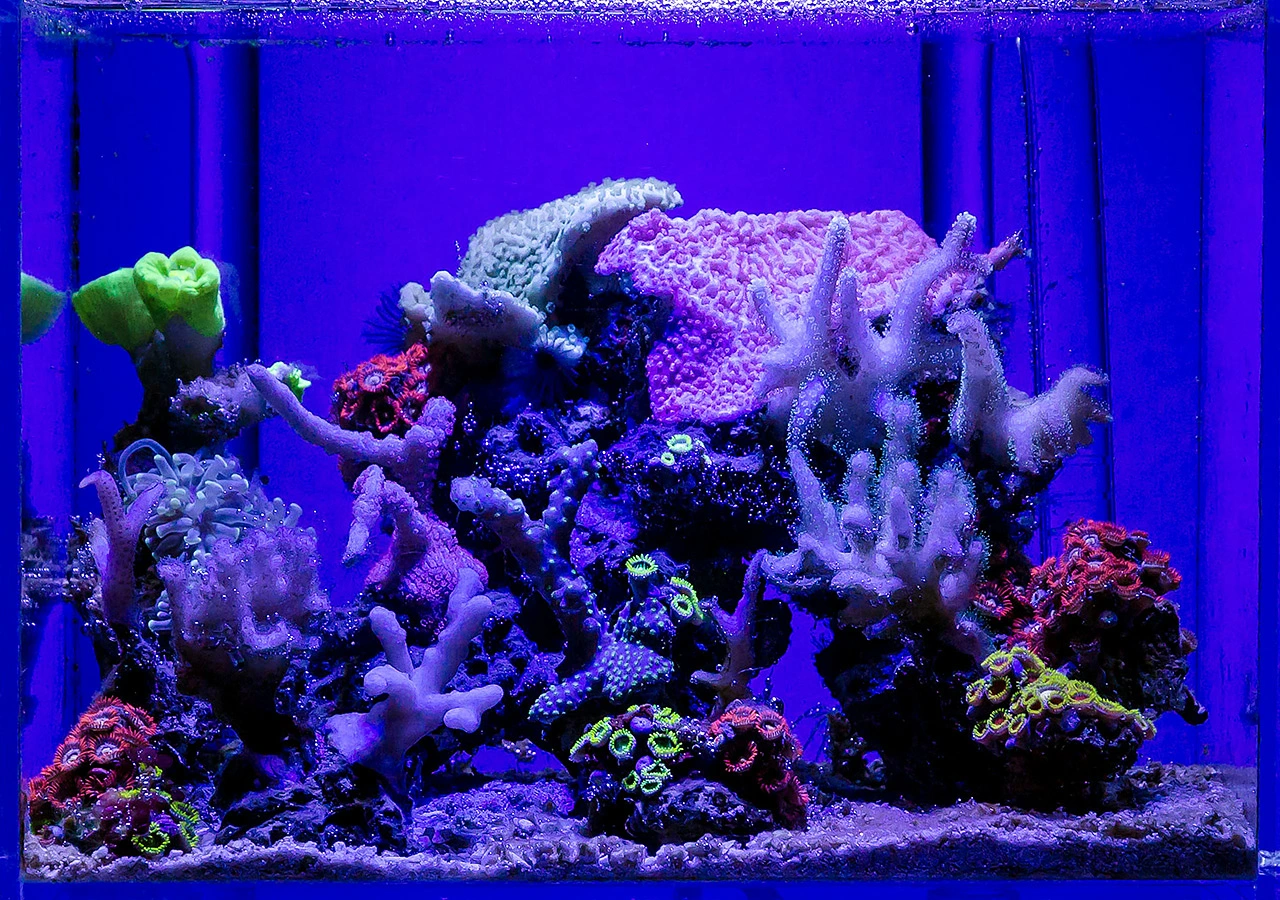Stunning 0-Gallon Reef Tank – dafil's TOTM | NanoReef

Tank Specifications
Volume: 0 Gallons / 3 Liters
Dimensions (L × W × H):
7.1" ×
5.1" ×
5.1"
17.8cm ×
13.0cm ×
13.0cm
Equipment List
- Salt: Reef Foundation
Frequently Asked Questions
What is the recommended maintenance routine for a pico reef tank?
For a pico reef tank, you should aim to perform a 100% water change with freshly mixed saltwater weekly. Additionally, manually top off for evaporation every day, maintain salinity at 1.025 and temperature between 77-78°F, and clean the glass weekly using tweezers and a razor blade.
How do I supplement trace elements in a pico reef tank?
To supplement trace elements, you can use products like Reef Foundation A, B, and C. For this specific setup, the owner supplements daily with 10 drops of Reef Foundation C, 15 drops of Reef Foundation B, and 10 drops of Reef Foundation A.
What filtration system is recommended for a small pico reef tank?
A miniature canister filter is suitable for a pico reef, such as a 40 GPH mini canister filter that includes a built-in 25W heater and an in-line air pump. Additionally, incorporating live rock into the filtration helps with biological filtration.
What water parameters should I monitor in a pico reef aquarium?
In such a small tank, focus on maintaining stable salinity, temperature, and water parameters. Regularly monitor salinity (aim for 1.025) and temperature (77-78°F). It's also beneficial to occasionally check pH and alkalinity.
What type of corals are suitable for a pico reef aquarium?
In a pico reef, you can keep a variety of corals, including SPS such as Montipora and Acropora species, LPS like Trumpet Coral, and soft corals such as Euphyllia and Zoanthids. Ensure that coral selection matches with the lighting and water parameters you can provide.
What is the best way to feed corals in a pico tank?
Feeding corals can be done weekly with a specialized coral food that is rich in nutrients. The tank owner feeds the corals weekly, so providing a consistent feeding schedule helps ensure their health and growth.
What should I do if my corals are not thriving?
If corals are not thriving, first check your water parameters for stability, especially salinity, temperature, and the levels of any supplemented elements. Look for signs of disease, such as zoa pox in Zoanthids, and consider changing feeding routines or light intensity that may be affecting their growth.
How can I prevent fish and invertebrates from dying in a pico tank?
To prevent losses, ensure proper acclimatization of new fish or invertebrates, and maintain stable water parameters. Due to the small size of a pico tank, fluctuations can cause significant stress. Additionally, select species that are known to be hardy and suitable for small systems.